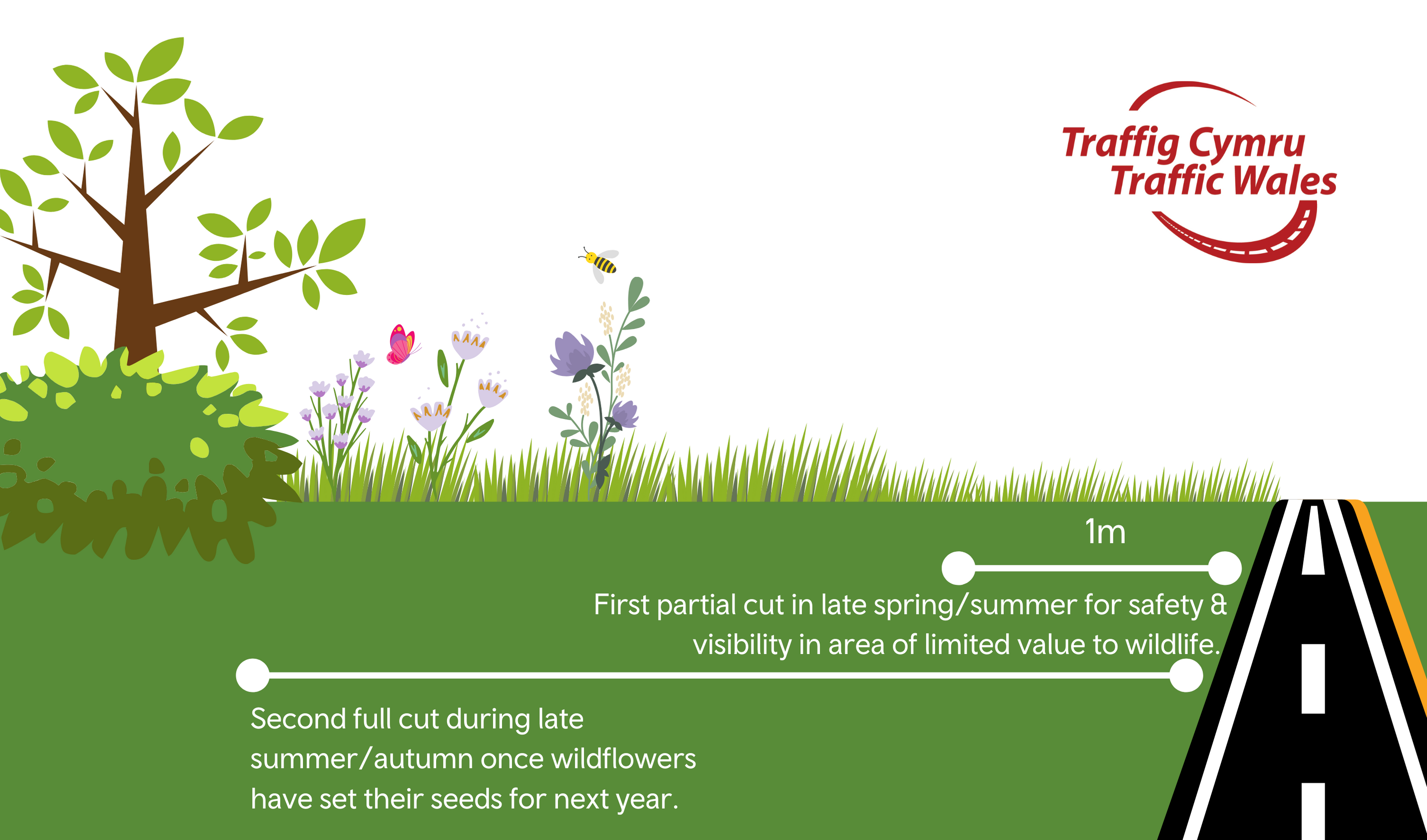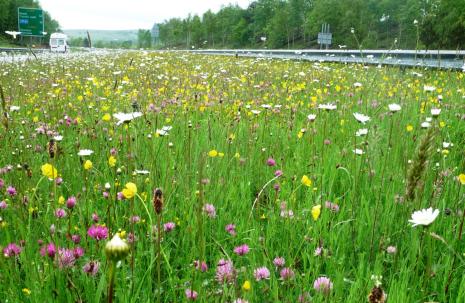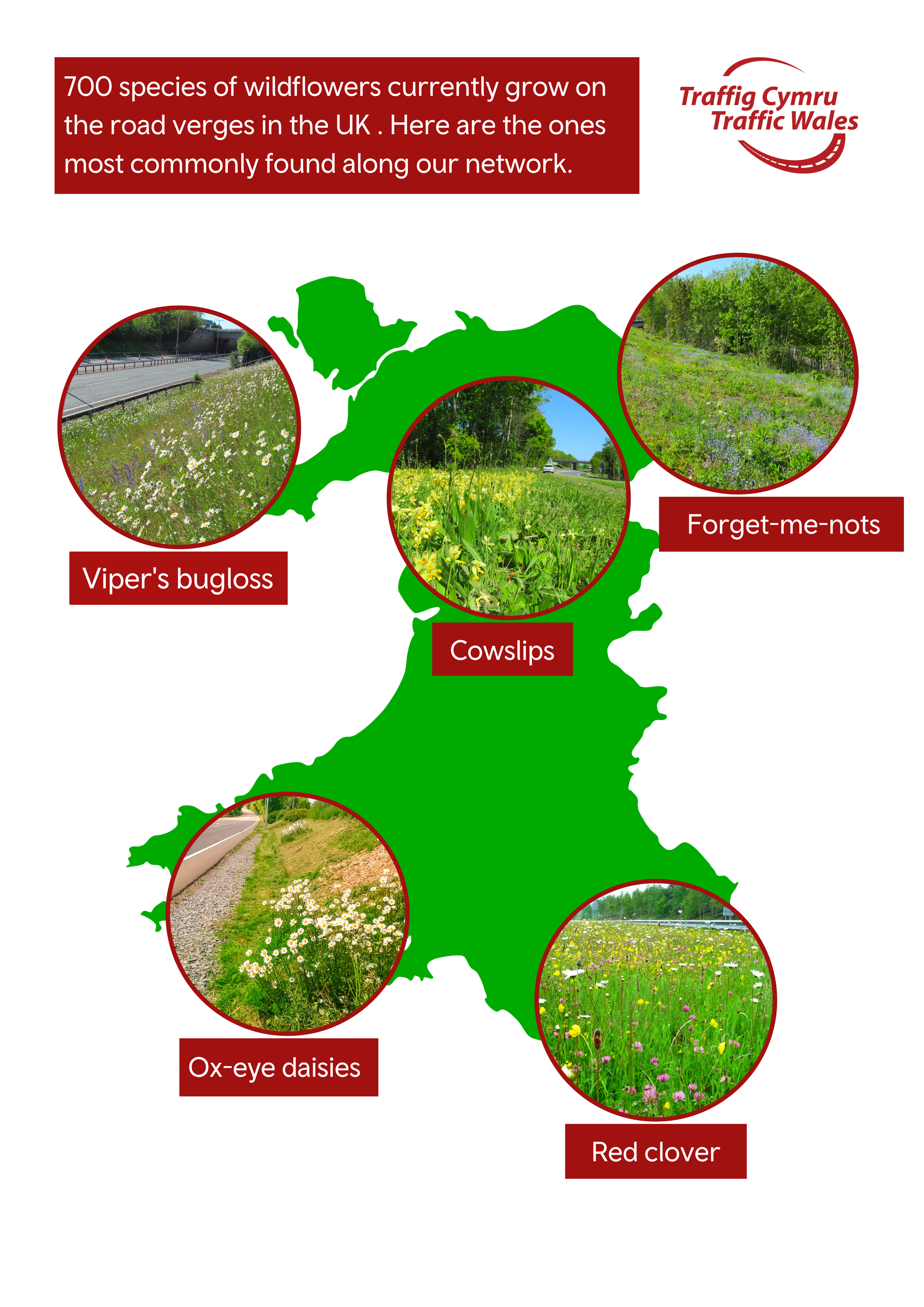700 species of wildflowers currently grow on our road verges in the UK and with over 97% of meadows destroyed since the 1930s, these verges are more vital than ever before to act as a refuge for pollinators and other wildlife. Over the years, our environmental team have developed a cyclical maintenance programme and other green initiatives to enhance the biodiversity of our roadsides whilst also ensuring the safety of drivers.
Without careful management and maintenance, our road verges would quickly become overrun with bramble thickets and scrub as the biodiversity value of the road verge diminishes. Regular management of our grassland verges is essential to help increase species diversity and stop competitive species such as grasses from overtaking wildflowers.
As well as mowing for the environmental benefits we also undertake safety and visibility cuts to ensure the safety of road users and the environment. Safety cutting is carried out to create visibility splays on roundabouts, junctions and accesses.
We mow the grassland verges twice a year, with the first cut usually timed for late spring and a second cut in late summer / early autumn. During the first cut we mow a 1-metre strip on species-rich verges. This area is of little intrinsic value to wildlife as it’s too close to the road. The second cut is a full cut and takes place after the flowers have completed their lifecycle and set seed. This allows for visually striking displays of wildflowers on our roadsides and provides a rich source of pollen and nectar for pollinators throughout the spring/summer months.

Not only does this two-cut management programme suppress the grasses and replenishes the wildflower seed bank, but it also improves safety for road users, reduces management burden over time and saves money.
Cut and collect
Areas of grassland are cut in late summer and the cuttings are collected to reduce fertility. Following the cut-and-collect process, the ground is then scarified using a grass harrow to open up the turf and create areas of bare earth to aid seed establishment.
We implemented this successfully in 2015 at the Conwy Portal site as part of the Welsh Government “Road Verges for Wildflowers Initiative”. Following the cut-and-collect and harrowing process, green hay was harvested from local SSSI meadow Caeau Tan y Bwlch and was spread over the scarified area. This led to an increase in the number and frequency of positive indicator species including yellow rattle, bird’s foot trefoil, meadow vetchling and red clover.
Removing layer of topsoil
Wherever possible we refrain from adding topsoil to our finished roadworks improvement schemes such as the Newton Bypass development. Alternatively, in some locations we implement subsoil mixing at sites such as Pen lôn Llanrwst and along the A479 Talgarth. These approaches ensure that low nutrient soil is maintained which encourages the biodiversity of wildflowers.


